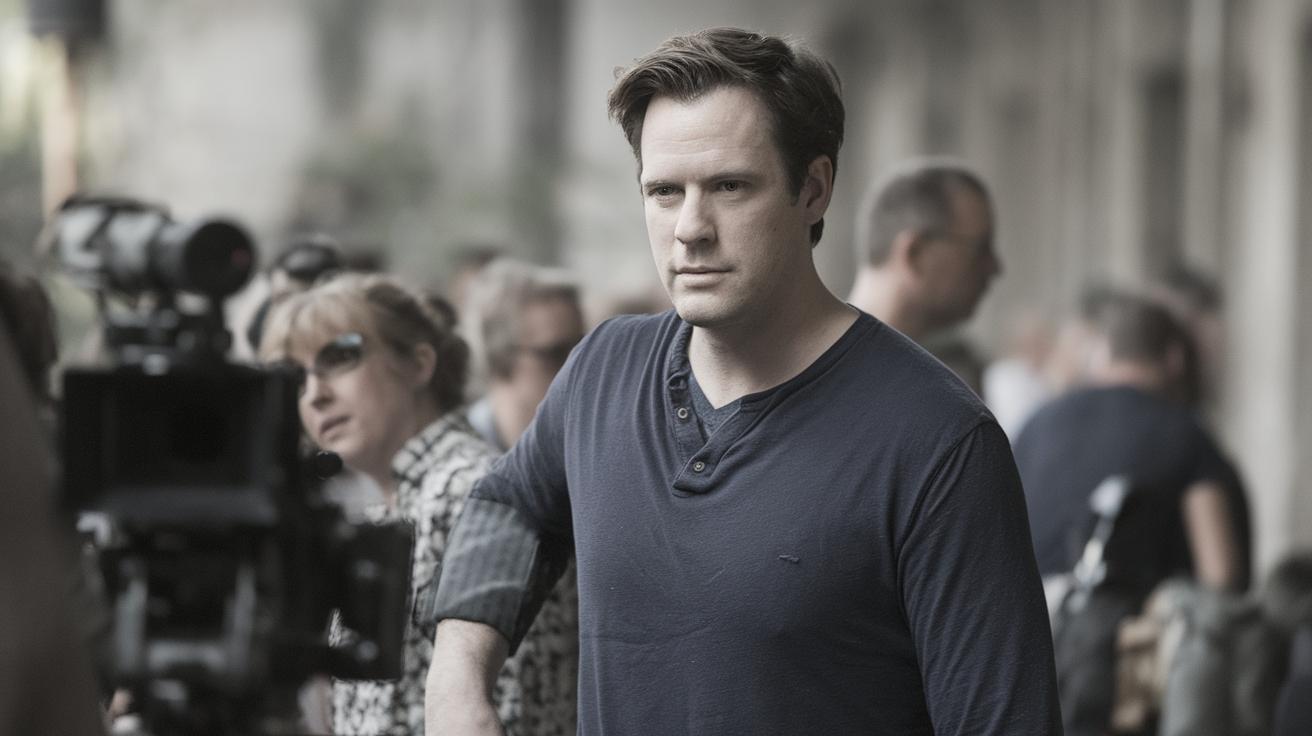How to Achieve Continuity in Film Production
Film continuity is a crucial aspect of the movie-making process, ensuring that shots taken at different times blend seamlessly to create a coherent story. This article delves into the concept of continuity editing, highlighting its importance, techniques, and the occasional employment of discontinuity to create impact. Through explanations and examples, we explore the essential rules of eyeline, 180-degree rule, and more, providing invaluable insights for filmmakers aiming to maintain narrative consistency. Additionally, we touch on the match on action cut, eye trace, and the contribution of these techniques to storytelling. Whether you’re a budding filmmaker or a film enthusiast, understanding these principles will enhance your appreciation and execution of film continuity.
What is continuity editing in film?
First, let’s define continuity editing
Continuity editing is a filmmaking technique used to ensure that the narrative flows smoothly and coherently from shot to shot. It prioritizes consistency in the story, characters, and surroundings, enabling the audience to remain immersed without being distracted by visual errors or mismatched elements. This method involves arranging shots in a way that is logical and temporal, often relying on a set of editing techniques that maintain spatial and temporal clarity.
The goal of continuity editing is to create an invisible art form where the cuts between shots go unnoticed, thus keeping the story’s momentum intact. Filmmakers employ various rules and techniques to achieve this, ensuring that each scene transitions seamlessly into the next. By doing so, the audience can focus on the narrative without being jarred by discontinuities or discrepancies.
CONTINUITY EDITING DEFINITION
What is continuity editing in film?
Continuity editing, in its simplest form, can be described as the systematic arrangement of shots to form a coherent narrative that is easy to follow for viewers. It’s a technical and artistic choice that involves understanding the storyline’s beats and ensuring each shot transitions logically. This practice not only helps storytellers maintain the narrative structure but also manipulates time and space to fit the director’s vision.
This editing style contrasts with more disjointed forms of editing and requires meticulous attention to matching action, eyeline, and other spatial relationships, often leading the viewer through a seamless experience. The most definitive aspect of continuity editing is its ability to make cuts invisible, thereby achieving a flow that supports the storytelling process.
Techniques of continuity editing in film
Eyeline
The eyeline match is a technique that involves aligning the actor’s gaze with the subsequent shot of what they are looking at, creating a sense of continuity and spatial logic within the scene. This technique acts as a virtual connector, guiding the viewer’s perspective naturally from one side to another, enhancing the illusion of a shared space between the characters and the audience.
By manipulating the viewer’s attention through an eyeline match, filmmakers can subtly guide emotional responses. The effectiveness of this technique lies in its ability to maintain continuity, creating an immersive narrative experience that remains clear without feeling enforced.
180-degree rule
The 180-degree rule is a fundamental guideline in filmmaking stating that two characters in a scene should maintain the same left/right relationship to each other. By keeping the camera on one side of an imaginary line, the audience can easily understand the scene’s spatial configuration and direction of action, preventing confusion.
This rule is essential in maintaining narrative coherence and visual clarity. While intentionally breaking this rule can be impactful, especially for dramatic or disorienting effect, it typically serves as a trusted tool in continuity editing, ensuring directional consistency throughout a sequence.
30-degree rule
The 30-degree rule complements the 180-degree rule, suggesting that camera shots of the same subject should not shift more than 30 degrees. This prevents jump cuts, maintaining a smooth visual transition between shots. Adhering to this rule ensures that changes in perspective aren’t jarring for the viewer.
This editing convention aids in creating seamless transitions that reinforce narrative structure, where the viewer’s focus is on the story rather than technical inconsistencies. It’s a subtle yet powerful tool in the filmmaker’s arsenal for maintaining engagement and visual harmony.
What is a match on action cut?
Matching action
A match on action cut is a technique that captures a single continuous movement across two shots, ensuring that one action begins in the first shot and is completed in the next. This method is instrumental in providing a sense of fluidity across edits, reducing the visual impact of the cut by aligning the movement perfectly.
By cutting on the movement, this technique preserves temporal continuity, creating the illusion of unbroken action that keeps the audience immersed in the story. From a character picking up an object to running through a scene, matching action serves as an essential device for seamless storytelling.
Continuity of Motion
Eye trace
Eye trace refers to the technique of ensuring the audience’s gaze follows the intended visual path across cuts. By focusing on the movement and direction, directors can guide the viewer’s attention, emphasizing elements crucial to the narrative while maintaining visual coherence.
Effective eye trace techniques seamlessly guide the audience’s perception from one focal point to another, creating an illusion of continuous motion. This enhances understanding and narrative flow, allowing viewers to engage deeply with the unfolding story without distraction.
Why Continuity Editing?
The importance of continuity
Continuity editing plays a critical role in film production by ensuring a logical progression of time and space. Its effectiveness lies in creating an immersive and engaging experience where the audience can easily follow and be emotionally invested in the story without disruptions.
In a well-edited film, continuity serves as the backbone that holds the narrative together, crafting a seamless visual discourse. It ensures that technical details don’t detract from storytelling, allowing audiences to engage with the deeper themes and emotional expressions of the narrative.
Discontinuity editing
Why break continuity editing?
Discontinuity editing, though less common, is a powerful tool for filmmakers looking to evoke specific emotions or highlight themes. Through intentional breaks in continuity, such as abrupt cuts, jump cuts, or mismatched elements, directors can draw attention to the artificial nature of film or disrupt the viewer’s expectations.
This technique often serves artistic purposes, challenging audiences by manipulating temporal and spatial relationships. It calls upon viewers to engage with the narrative on a more complex level, often provoking thought and discussion and offering a unique lens through which to interpret the story.
Related Posts
-
Mastering the Art of Film Storyboarding
-
The Impact of Sound Design in Cinematic Storytelling
-
Understanding the Elements of Mise-en-scène
UP NEXT
Walter Murch’s Rules of Editing
Walter Murch’s rules provide timeless insights into the world of editing, prioritizing emotion and continuity. His philosophies encourage editors to balance technical skills with emotional storytelling, ensuring that each cut serves the narrative and aesthetic goals.
Exploring Murch’s rules offers editors guidance on achieving intuitive storytelling, emphasizing the importance of rhythm, visual composition, and the subtle impact each decision has on the overall film experience. This exploration promises to be both enlightening and practically valuable for those keen on refining their editing prowess.
Showcase your vision with elegant shot lists and storyboards
Shot lists and storyboards are essential tools in the film production process, helping filmmakers organize their vision and ensure continuity from pre-production through post. These visual documents allow for precise planning of scenes and shots, providing a reference point that guides film continuity.
In creating shot lists and storyboards, filmmakers can foresee challenges, resolve potential issues, and communicate their vision effectively to crew members. Broadly, they serve as a roadmap that, when utilized effectively, aligns everyone involved in the creation of a cohesive, compelling film.
| Topic | Summary |
|---|---|
| Continuity Editing | Ensures logical storytelling through seamless transitions and coherence across shots. |
| Key Techniques | Includes eyeline match, 180-degree rule, 30-degree rule, match on action, and eye trace to maintain fluent narrative flow. |
| Importance | Facilitates audience engagement by crafting a clear and immersive story experience. |
| Discontinuity Editing | Used to create impact, provoke thought, and challenge conventional storytelling through deliberate narrative breaks. |


